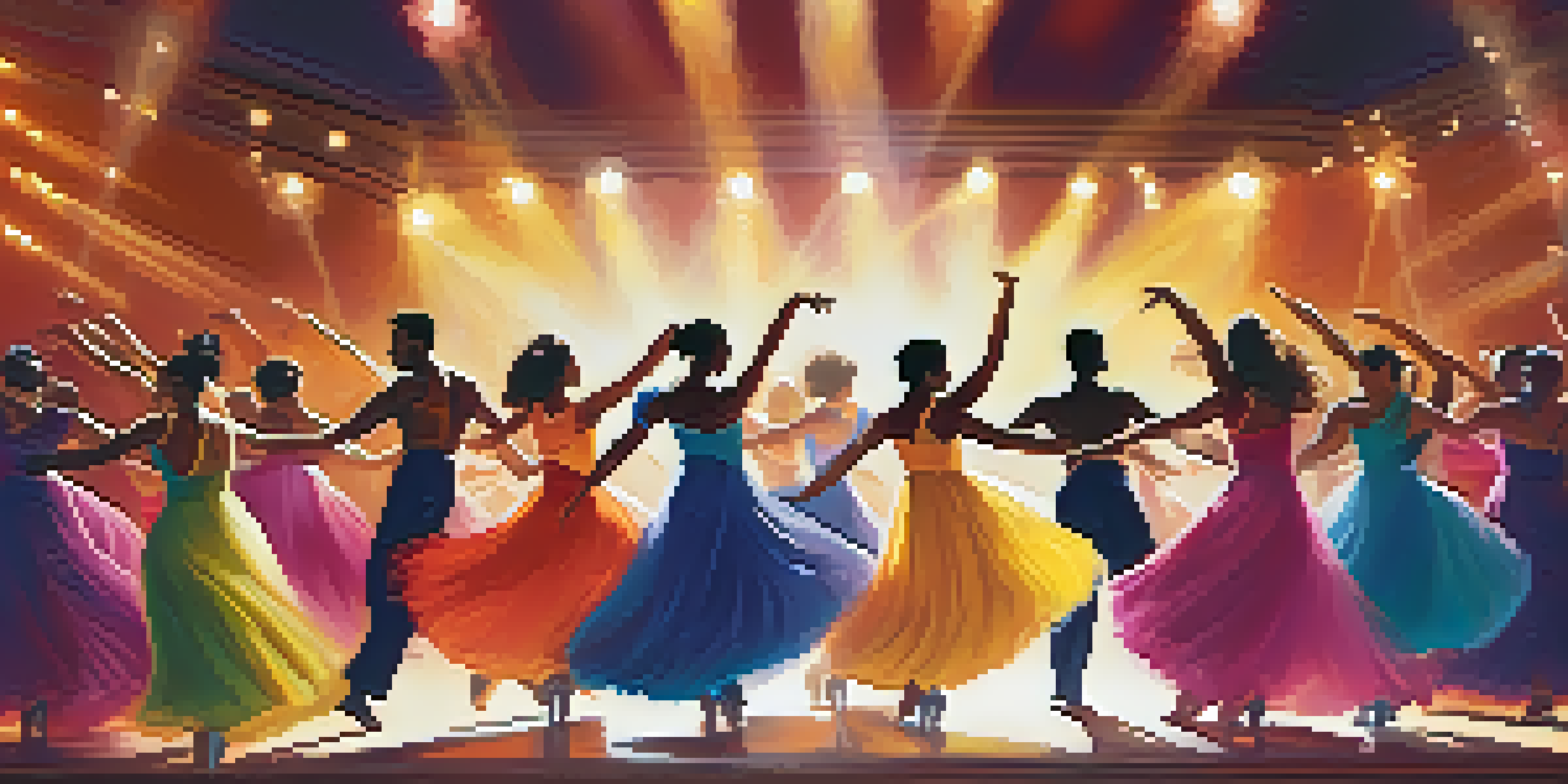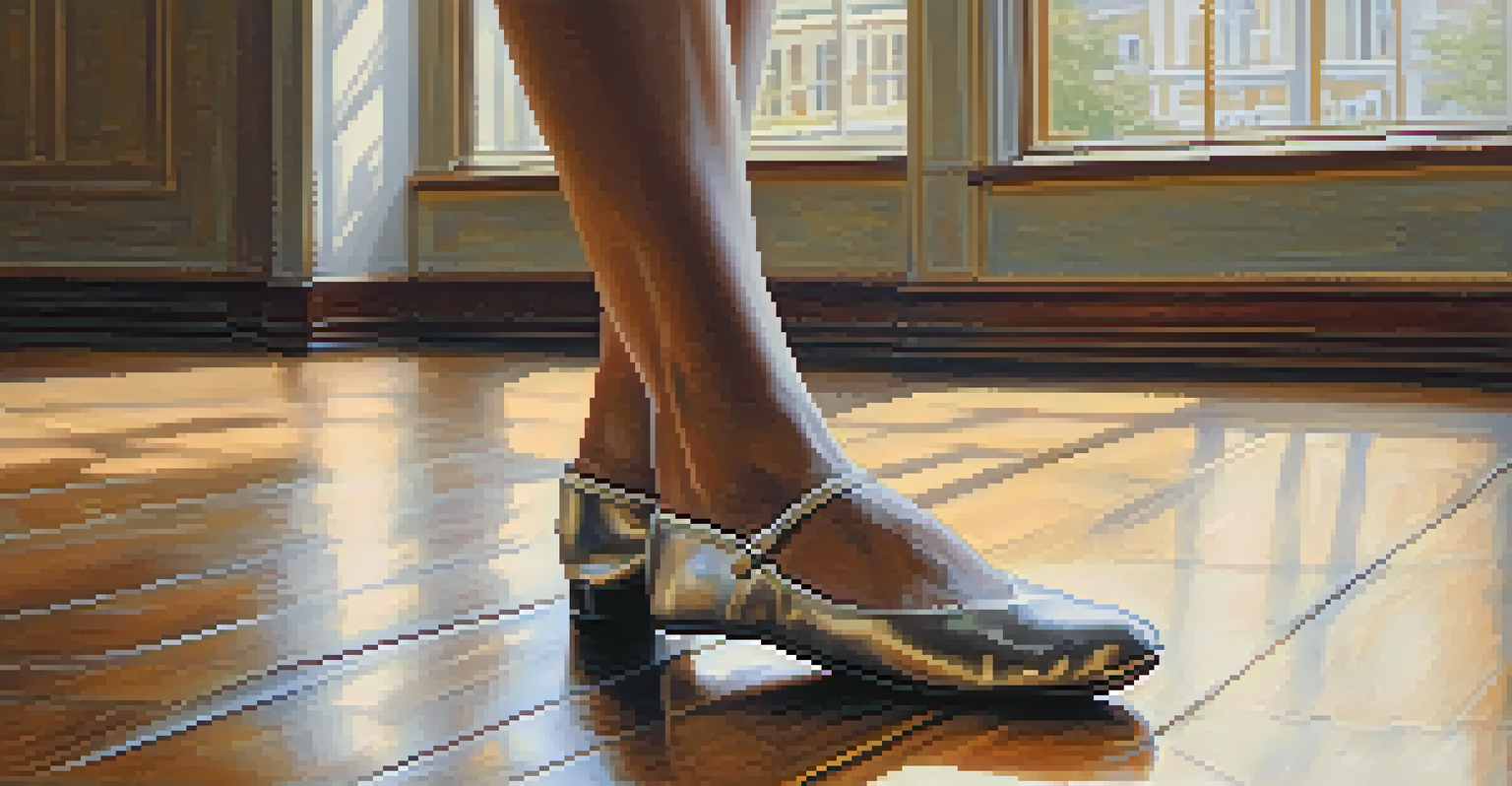The Art of Dance Reviews: Balancing Subjectivity and Objectivity

Understanding Dance Reviews: What Are They?
Dance reviews serve as critical evaluations of performances, providing insights into the artistry displayed on stage. They help audiences decide which shows to attend and offer feedback to performers and choreographers. Essentially, a good review captures the essence of a dance piece, reflecting both the technical and emotional components involved.
Dance is the hidden language of the soul.
In these reviews, critics analyze various elements such as choreography, execution, and stage presence. By examining these aspects, readers can gain a deeper appreciation for the complexities of dance. Moreover, reviews often highlight the context surrounding the performance, including the choreographer's vision and the dancers' interpretations.
Ultimately, dance reviews play a crucial role in the dance community, fostering dialogue between artists and audiences. They can elevate a performance's profile, attracting more viewers and encouraging support for the art form. This relationship between reviewers and dance is essential in nurturing a vibrant cultural landscape.
The Subjective Nature of Dance Critique
At their core, dance reviews are inherently subjective; they reflect the reviewer's personal tastes, experiences, and emotions. For instance, one critic may find a performance exhilarating, while another might view it as lackluster. This subjectivity can make dance reviews both captivating and contentious, as differing opinions spark discussions among audiences.

Critics often draw on their own backgrounds in dance or performance to shape their viewpoints. What moves one reviewer may not resonate with another, creating a rich tapestry of perspectives. This diversity of opinion is valuable, as it encourages readers to explore various interpretations and develop their own preferences in dance.
Understanding Dance Reviews
Dance reviews evaluate performances, offering insights that help audiences and dancers alike appreciate the artistry involved.
However, it’s essential for reviewers to recognize their biases while critiquing a performance. Striking a balance between personal reaction and informed analysis helps maintain credibility. This awareness allows critics to offer insights that are both relatable and enlightening to their audience.
The Role of Objectivity in Dance Reviews
While subjectivity is a key component of dance reviews, objectivity also plays a vital role in shaping credible critiques. Objective elements include technical proficiency, choreography structure, and stagecraft. By assessing these aspects, a reviewer can provide a more balanced view that appeals to a wider audience.
The dance is a poem of which each movement is a word.
For example, a dance piece may be choreographed beautifully but executed poorly, or vice versa. Highlighting these distinctions helps readers understand the intricacies of the performance. This objective analysis can serve as a guideline for improvement, benefiting both dancers and choreographers.
Balancing subjective impressions with objective criteria allows critics to present a well-rounded review. This approach not only adds depth to their writing but also enhances the readers' experience, enabling them to appreciate the performance on multiple levels.
Crafting a Balanced Review: Tips for Critics
To create a balanced dance review, critics should start by noting their initial reactions during the performance. These emotional responses are valuable; they can guide the narrative and help readers connect with the review. However, it’s crucial to follow up these feelings with objective observations to substantiate their points.
Incorporating specific examples from the performance can enhance a review's credibility. Mentioning standout moments, such as a particular dance sequence or a powerful solo, can illustrate the reviewer's perspective effectively. This method allows readers to visualize the performance, making the review more engaging.
Subjectivity vs. Objectivity
A successful dance review balances personal opinions with objective analysis, enhancing credibility and reader understanding.
Lastly, closing with a summary of the review that encapsulates both subjective and objective viewpoints leaves readers with a holistic understanding of the performance. This balanced approach not only fosters informed opinions but also cultivates a deeper appreciation for the art of dance.
The Impact of Dance Reviews on Artists
Dance reviews can significantly influence the careers of performers and choreographers. Positive feedback can elevate a dance company’s reputation, leading to increased ticket sales and opportunities for future performances. Conversely, critical reviews can serve as constructive feedback, prompting artists to reflect and refine their craft.
For many dancers, receiving recognition through reviews can be a career milestone. It validates their hard work and dedication, while also providing a platform to showcase their talent. This recognition can lead to new opportunities, collaborations, and even funding for future projects.
However, it’s essential for artists to approach reviews with an open mind. Not all feedback will be universally positive, and learning to navigate criticism is part of professional growth. Embracing both praise and constructive criticism can lead to a more resilient and adaptive artistic practice.
Navigating the Digital Landscape of Dance Reviews
In today's digital age, dance reviews are more accessible than ever, thanks to social media and online platforms. Critics can share their insights instantly, reaching a global audience in real-time. This immediacy fosters engagement, allowing readers to participate in discussions and share their perspectives on performances.
However, the sheer volume of reviews available online can be overwhelming. With countless voices contributing to the conversation, distinguishing credible critiques from personal opinions becomes challenging. Readers must cultivate a discerning eye, seeking out reviewers whose insights resonate with their own tastes and values.
Impact on Artists' Careers
Dance reviews can significantly influence artists' careers by validating their work and providing constructive feedback for growth.
Moreover, the digital landscape enables emerging critics to share their voices and perspectives, enriching the dance discourse. This democratization of reviews promotes diversity in opinions and experiences, ensuring that a wide array of dance narratives is heard and appreciated.
The Future of Dance Reviews: Trends and Innovations
As the dance world evolves, so too will the landscape of dance reviews. With advancements in technology, we might see more immersive experiences, such as virtual reality critiques, where audiences can 'step into' a performance from their homes. This innovation could redefine how we experience and review dance.
Furthermore, the growing emphasis on inclusivity and representation in the arts is likely to influence dance reviews. Critics may focus on highlighting diverse voices and experiences, ensuring that all forms of dance receive recognition. This shift could lead to a richer understanding of the art form as a whole.

Ultimately, the future of dance reviews will hinge on the ability of critics to adapt to changing trends while maintaining a balance between subjectivity and objectivity. By embracing new technologies and fostering inclusivity, dance reviews can continue to inspire audiences and elevate the art of dance.